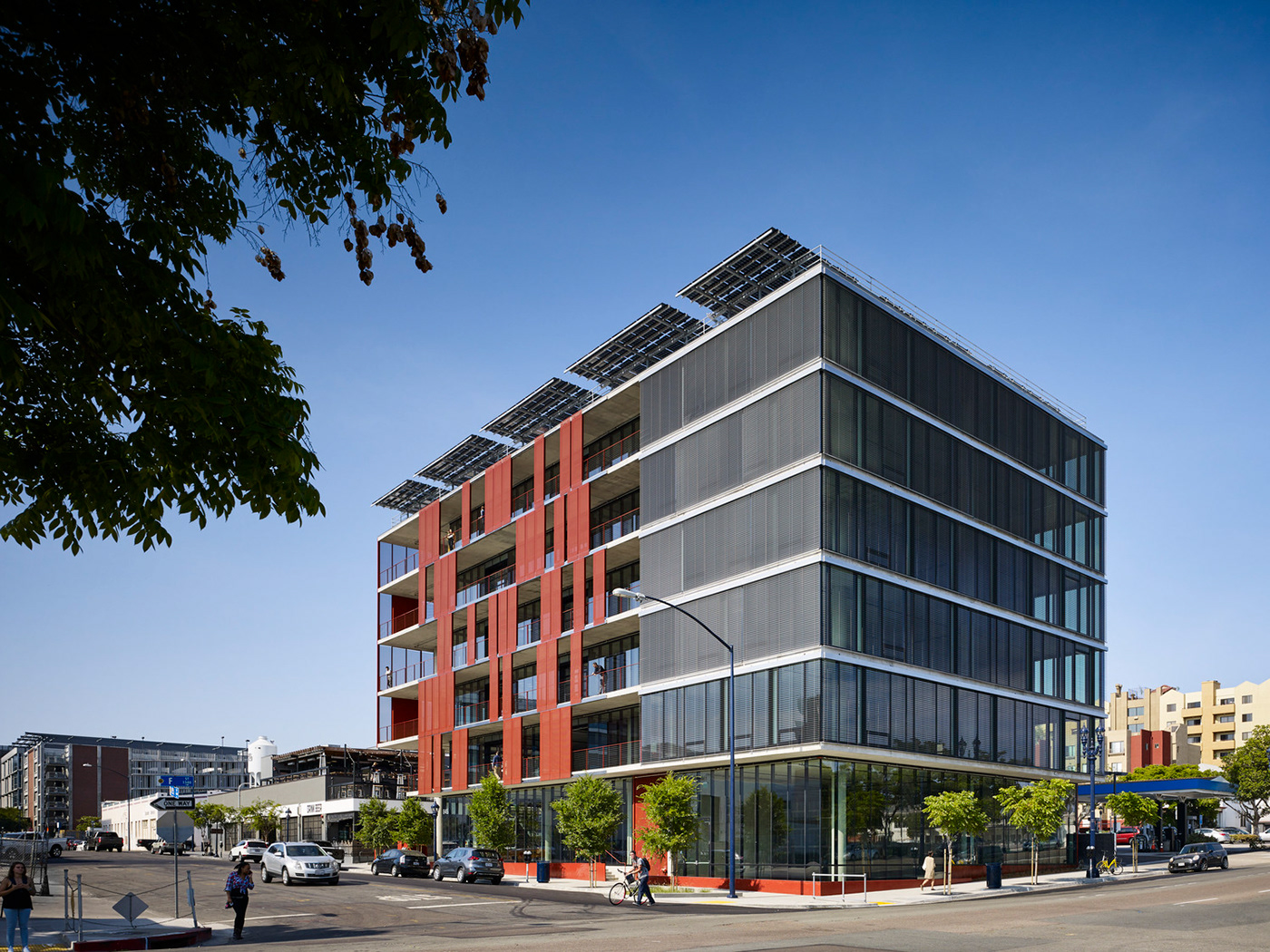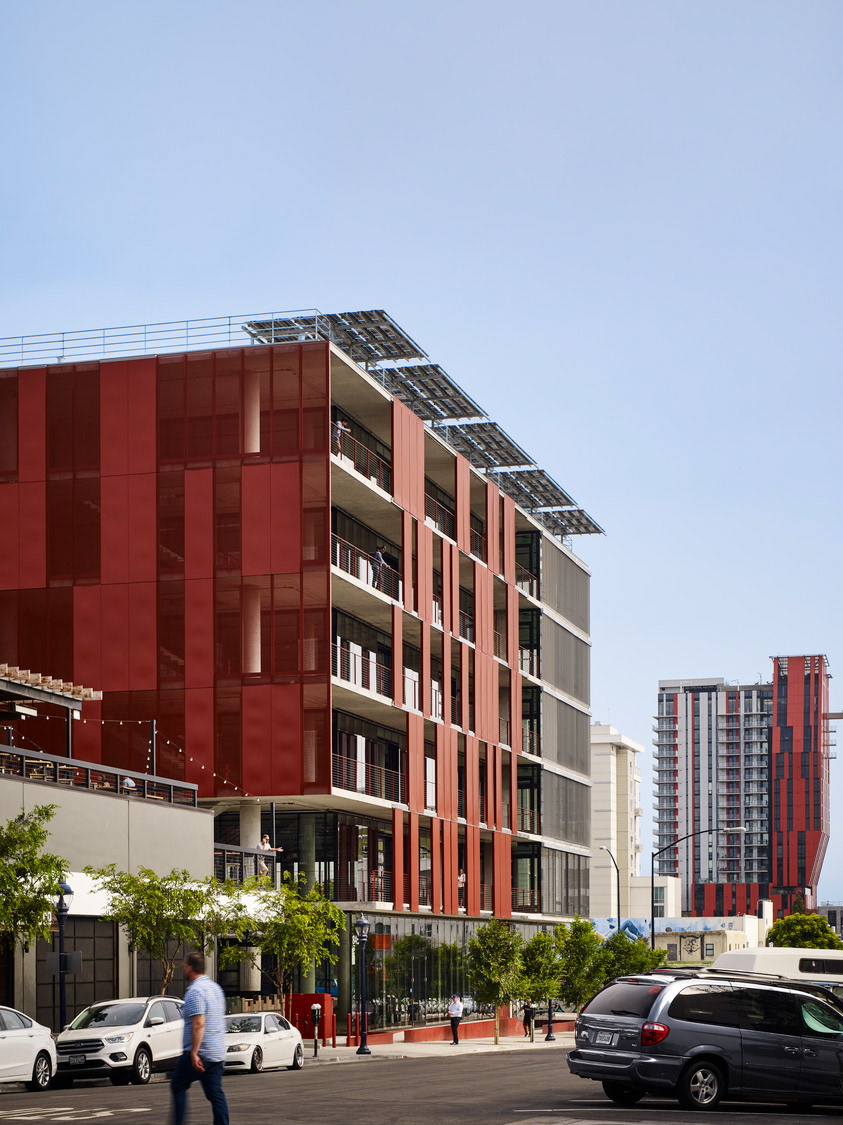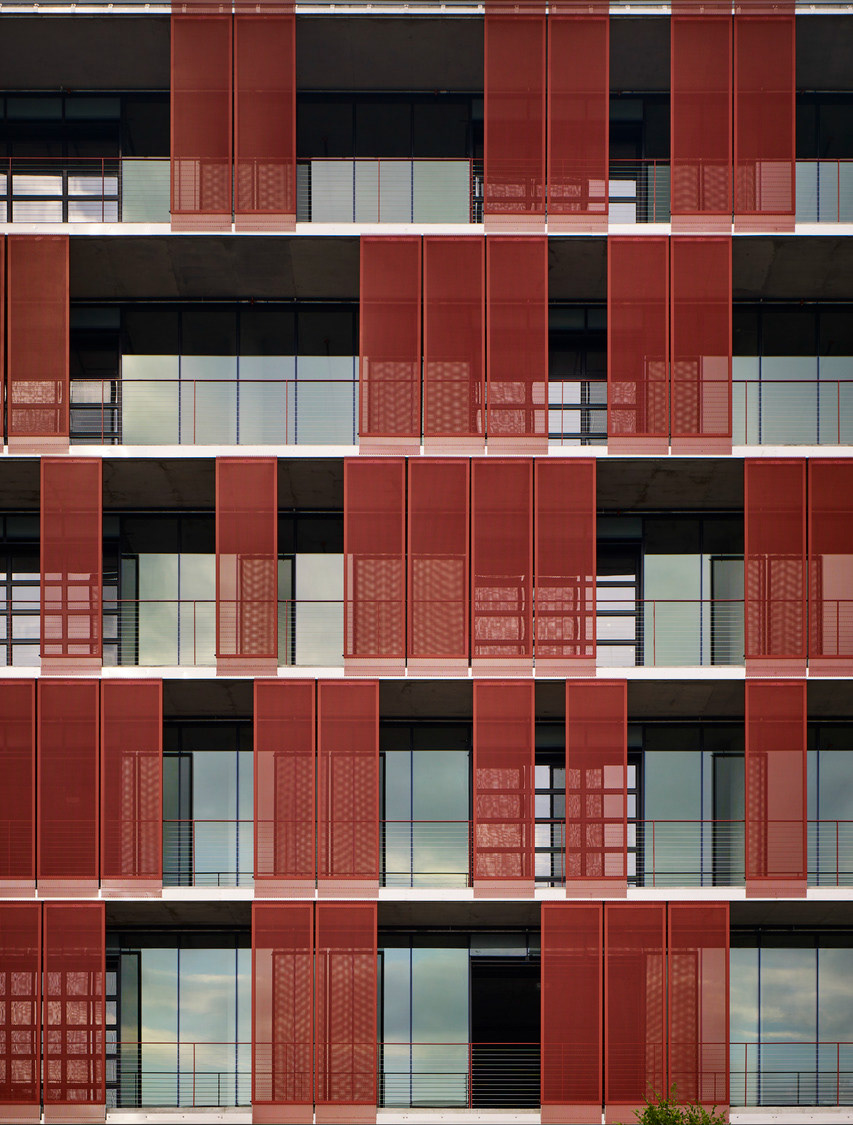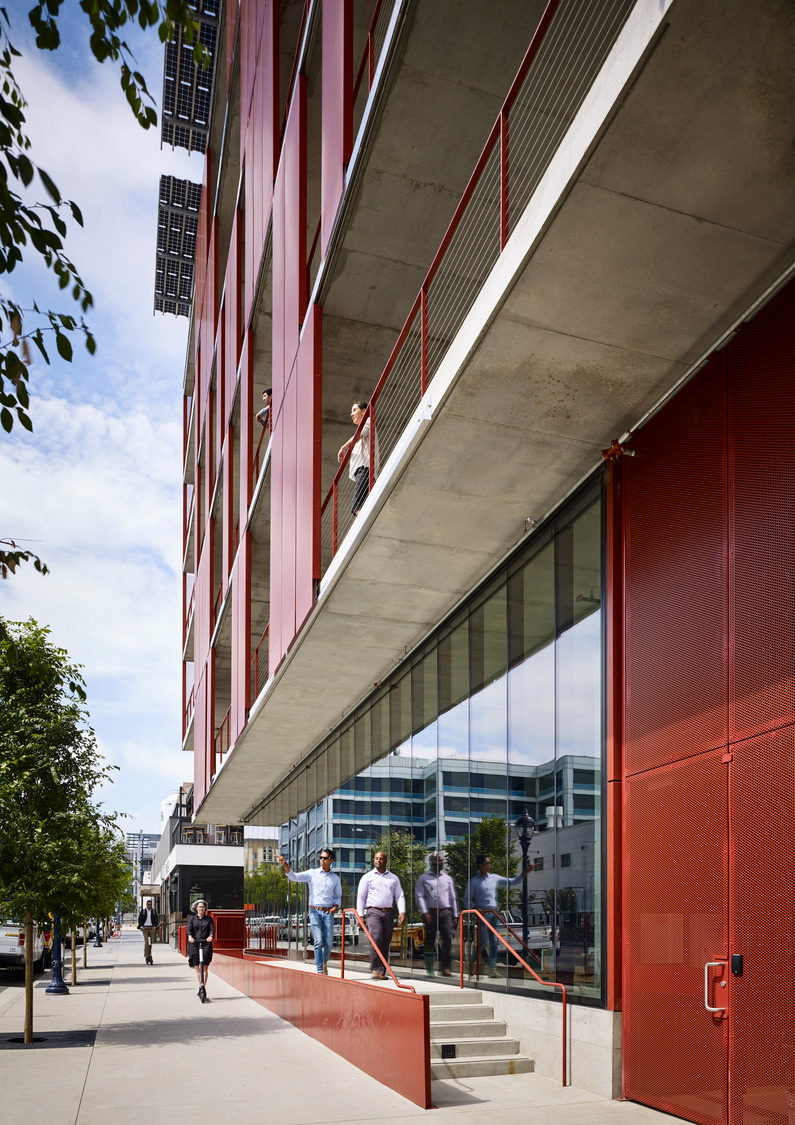
Nick Merrick © Hall+Merrick 2017

Nick Merrick © Hall+Merrick 2017
As part of its 2010 Master Plan Update, Metropolitan Community College (MCC) began to strategically create centers of specialization at various MCC locations in order to reduce facility redundancy and improve the effectiveness of its delivery of education to the community. The Master Plan Update called for three separate buildings and integrated landscape on the historic Fort Omaha Campus in Omaha, Nebraska. Holland Basham Architects served as the Executive Architect for the project and was responsible for the design of the Academic Success Center, BCDM Architects was responsible for the design of the Construction Education Center, and BNIM was responsible for the design of the Center for Advanced and Emerging Technology (CAET), with all three firms coordinating work throughout the design and construction phases. BNIM also served as the LEED administrator for all buildings as part of the project.
The goal of the CAET was to provide the tools and space for developing innovative academic programming targeting industry-specific emerging technologies. The CAET building encourages the “making of things,” where prototyping, design, and production can spur innovation and entrepreneurship — filling a niche for a maker space that does not yet exist in the region. The transformative instructional design employs new work-embedded methodologies for more effective and efficient training. BNIM’s design concept also provides flexible and adaptable space, collaborative project rooms, conference areas, and soft space for chance interaction between students, faculty, and industry professionals.
CAET established and achieved strong sustainable goals, fulfilled a commitment to LEED Certification, and utilized a highly integrated design process. The project redeveloped an existing urban site, improved stormwater management for the surrounding urban area, and created pedestrian and public transportation connections to the neighborhood. The building design holistically incorporated recycled content materials, diverted waste from the landfill, and created a highly productive and energy efficient interior environment through integrated water, HVAC, and lighting systems. CAET was optimized for daylighting and lighting controls and received a LEED Gold Certification in December 2017.

Nick Merrick © Hall+Merrick 2017

Nick Merrick © Hall+Merrick 2017

Nick Merrick © Hall+Merrick 2017

Nick Merrick © Hall+Merrick 2017

Nick Merrick © Hall+Merrick 2017

Nick Merrick © Hall+Merrick 2017

Nick Merrick © Hall+Merrick 2017

Nick Merrick © Hall+Merrick 2017

Nick Merrick © Hall+Merrick 2017
